Everything you need to know about kitten scratching
Understanding your kitten and learning more about why kittens scratch will also allow you to identify the difference between normal amounts of scratching and behaviour that could be cause for concern.
Article
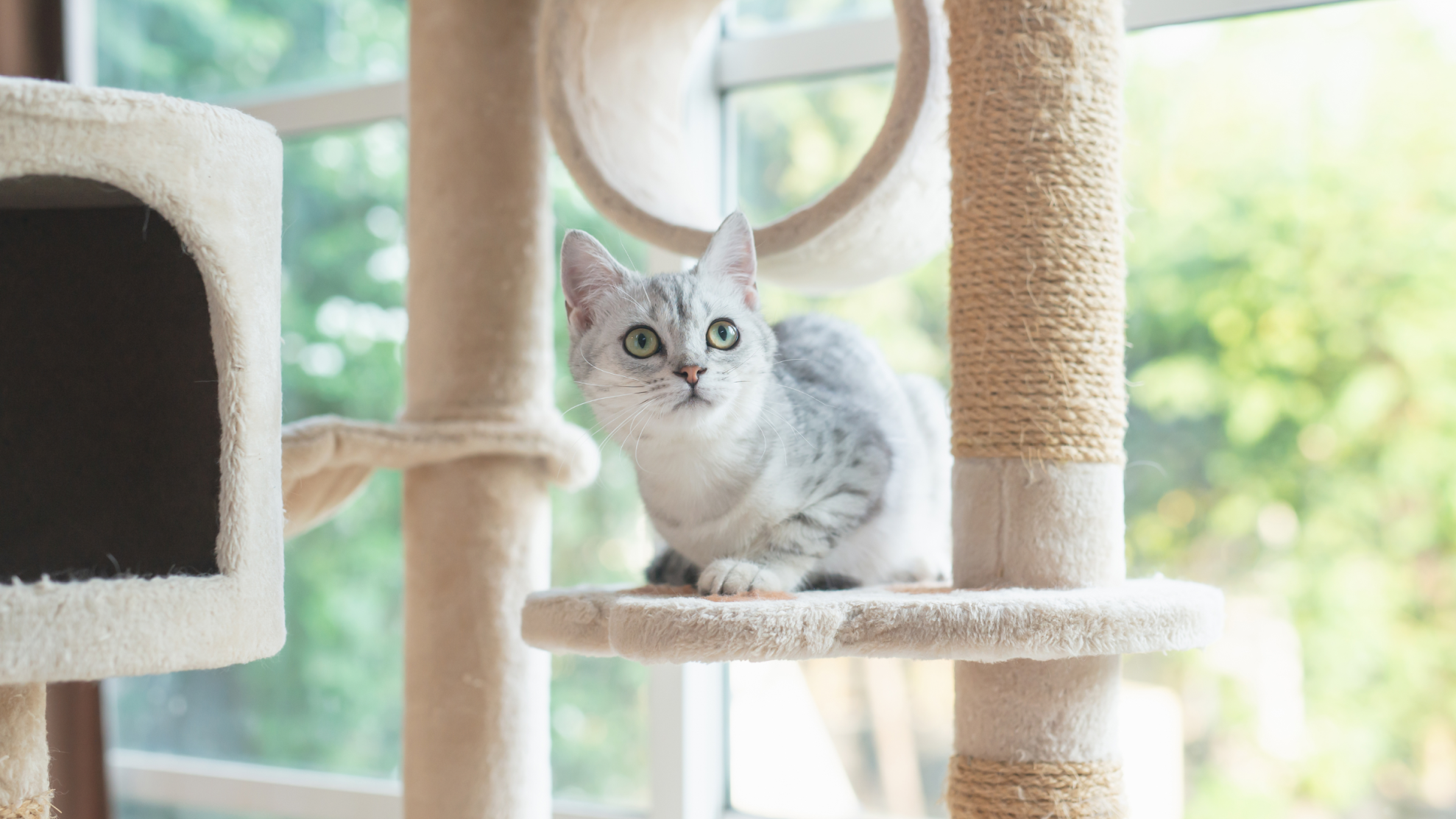
Understanding kitten scratching behaviour
Scratching is instinctive feline behaviour and as their owner, you need to make sure their environment meets their scratching needs. To do that, it helps to be familiar with the reasons behind your kitten’s behaviour.
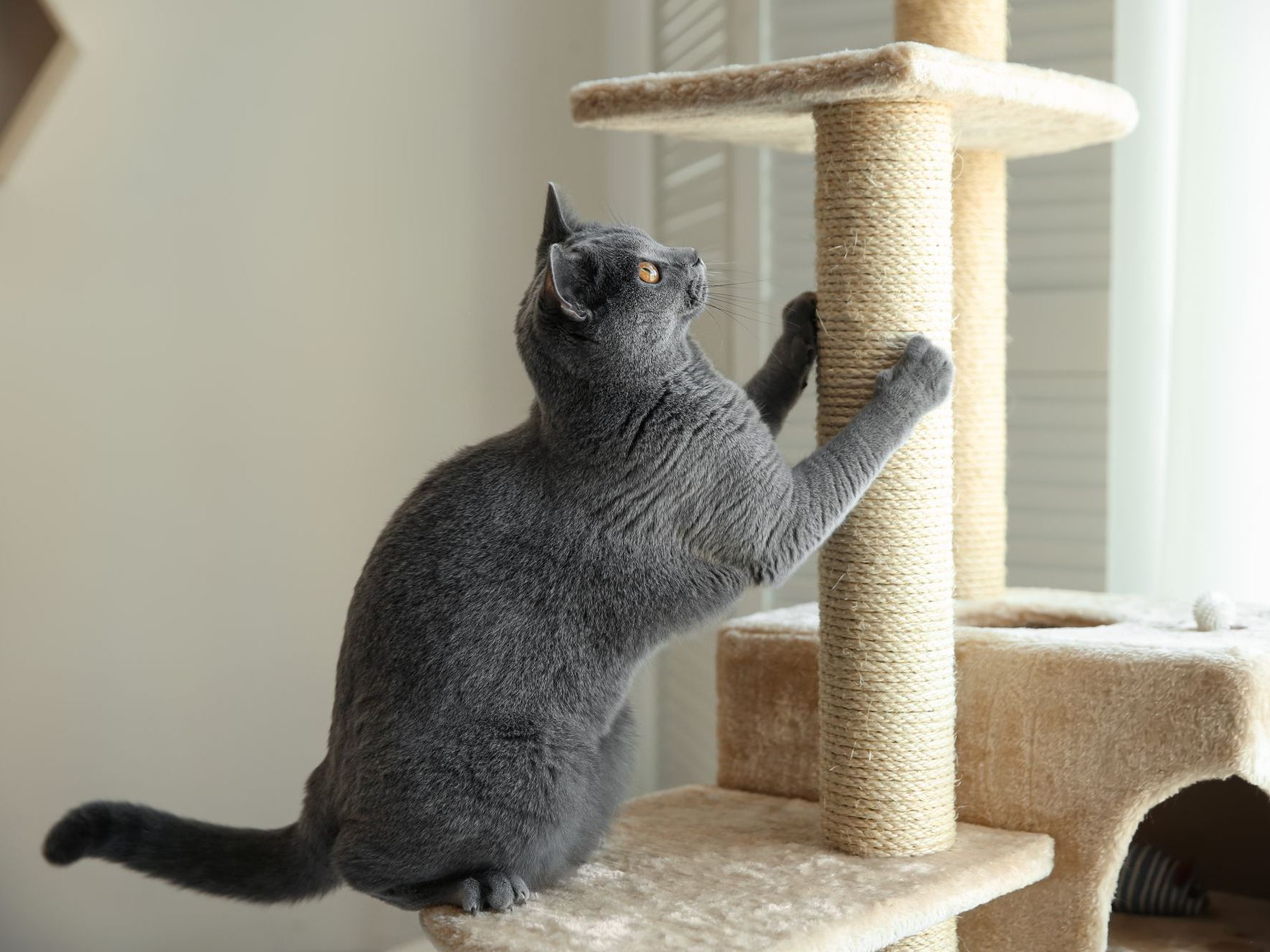
Why do kittens scratch?
Kitten scratching and kitten stretching (which tend to go together) are normal feline habits that help them maintain their claws and work the muscles of their limbs and spine, keeping them in good physical shape. They also play a role in kittens marking territory and communicating with other cats.
Some facts about kitten claws:
- Kittens’ claws are made for climbing
- Their front claws are usually sharper.
- Cats’ claws are protractible, (hidden under skin and hair and extended as needed)
- Claws can be used for self-defence when necessary
- A kitten stretching out means planting their front claws and dragging them along a horizontal or vertical surface
- The scratching motion removes the outer layer of the claw and reveals a sharp new layer underneath
- As claws stretch out and dig, the scent and sweat glands between their paw pads mix together, depositing a unique scent that can be detected by other cats
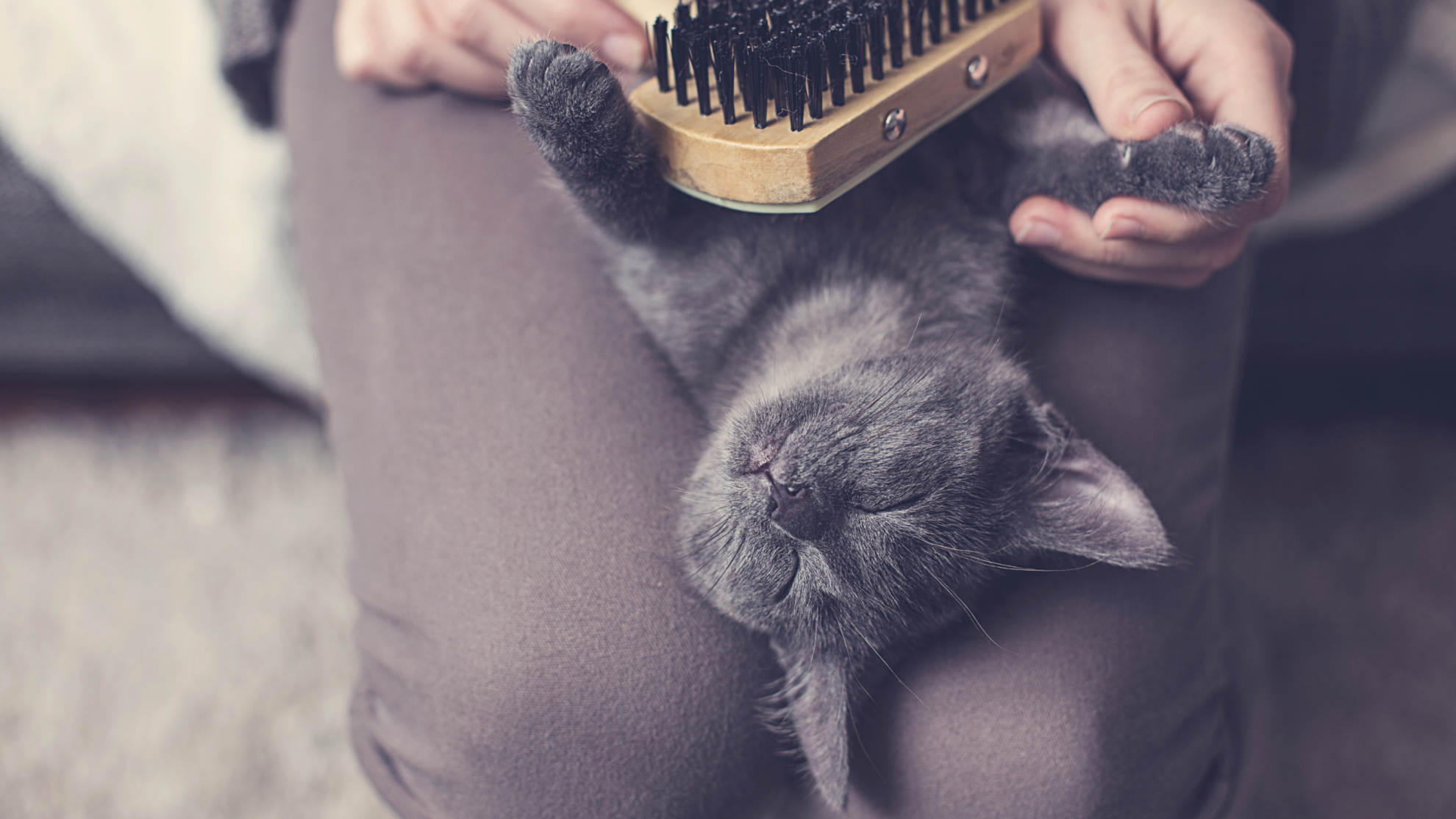
What your kitten’s scratching tells you about their emotions?
Stretching and scratching, which often go together, extend beyond the merely physical, helping kittens mark their territory and conveying clues about your kitten’s emotions and mental state. Observing their scratching habits carefully should provide clues to understanding your kitten’s behaviour.
Scratching as a sign of distress
Understanding kitten behaviour in general and what it may be communicating—and understanding your kitten in particular—are essential as a pet owner.
In some cases, scratching can be a sign your kitten is in pain or frightened. You know your pet best: if they are consistently lashing out to scratch when touched on one particular area of their body, that could be a sign of pain, meriting a trip to the vet.
If they always seem to scratch a lot in one part of their home or around one particular person (or animal), they may be nervous.
Scratching differs for outdoor and indoor cats
If your cat ventures outdoors, they’re likely to scratch their claws on the bark of trees, fence posts or other suitable surfaces, adorning them with their unique scent. This is your kitten marking territory as a way to communicate with other cats.
While kitten scratching behaviour may be partly about sending messages to other felines, for indoor cats it can also provide information to their human owners.
A bored kitten or a frustrated kitten may start to scratch more than they did previously. As you get to know your pet, you’ll get used to the level of scratching that is normal for them.
For excited kittens, still learning about the world, scratching and batting with their paws are also a part of play, but you’ll need to patiently help them learn not to bat and scratch at human fingers.
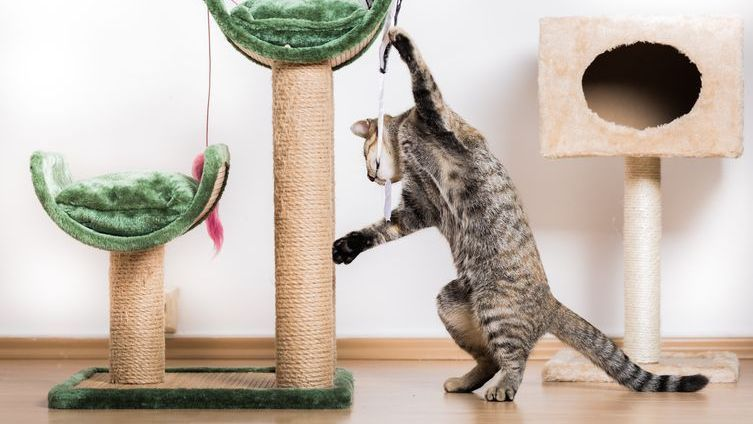
Scratching and your kitten’s exercise needs
Your kitten doesn’t need to be walked like a dog, but kitten exercise is still important and scratching is a big part of it. Kitten stretching and scratching behaviour, is instinctive. They reach out their front legs, flexing their muscles, when they scratch. If your kitten ventures outside, they will naturally take care of their claws and work their muscles as they climb trees, scale fences and pounce in pursuit of … well, anything that moves really.
Some of the best kinds of exercise for kittens are playing and climbing. In your home,ideally provide a tall scratching tower to help keep your kitten fit and active, as well as giving them a fun place to fulfil their scratching instinct (while preserving your furniture) even if they don’t have access to the outdoors.
Cats often appreciate a high vantage point. But giving your cat a perch from which to observe the world is not the only reason for buying a tall scratching post. When kittens stretch, the movement exercises their forelimbs and their spine, helping keep them in good physical shape, so a scratching surface that gives them the luxury to stretch out is a good idea.
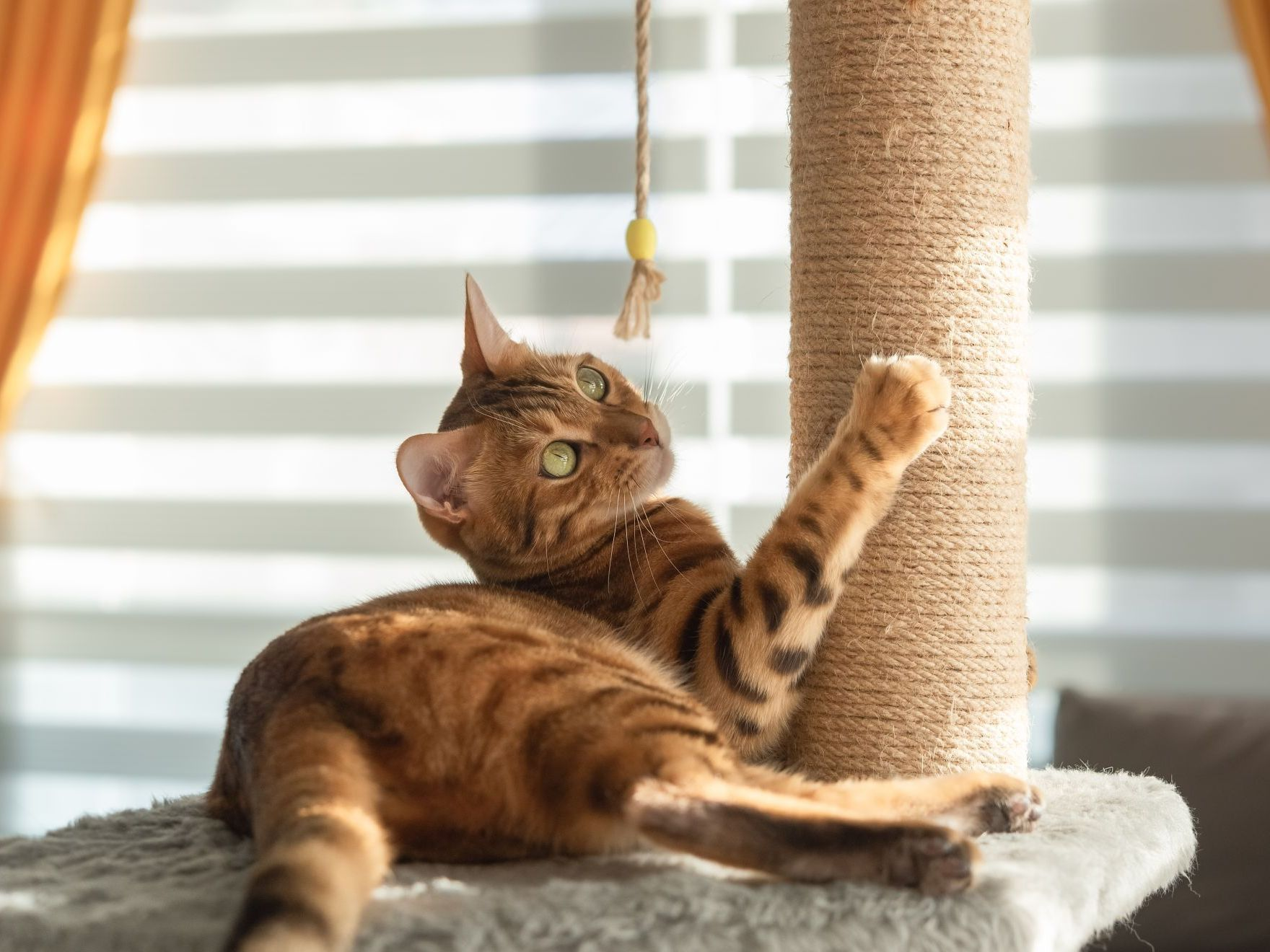
Cat nail maintenance: a how-to guide
As your cat grows older, you will need to pay closer attention to their claws. Older felines are generally less supple; they should still have access to a cat scratching post but may need some assistance in maintaining their claws, particularly if they live indoors.
This is when you’ll be pleased you got your pet used to kitten nail care at an early age (not to mention getting used to cutting kitten nails yourself). You should be sure to check their paws regularly to make sure they have not grown too long and pierced the soft pads, which can lead to abscesses.
Five kitten nail care tips to get started
- Get the right equipment: kitten nail care means special nail clippers (your vet can advise you if necessary)
- Pick your moment: wait for a time when your kitten is calm
- Gently cut off just the very tip of your kitten’s claws
- Be careful you don’t cut too much: if you nick the pink part of the claw, also known as ‘the quick’, your kitten’s claws will bleed
- Know when to call for help: if your kitten is too stressed out by the experience, it may be better to take them to a vet or professional groomer instead

How to train your kitten not to scratch
While some scratching is normal, and your goal should not be eliminating this behaviour, your kitten needs to learn to live in harmony with their humans and any other pets. Following these kitten training tips should help keep not only your kitten’s claws but also your furniture (and fingers) in good condition.
Top positive reinforcement training pointers
If you let your kitten nip and scratch at your hands when they’re tiny, you’ll have a hard time breaking that habit when they’re older.
Make sure your kitten has plenty of toys to bat back and forth and that you devote enough time to playing with them. A bored or frustrated kitten is more likely to scratch.
If your kitten starts batting at you with their claws out, either distract them with a more suitable game or briefly stop interacting with them. Once they’ve calmed down you can restart the play session or give them a cuddle.
When your kitten has got it right, let them know, with praise, a cuddle, more playtime or even a treat, taken out of their daily rations of course. Always take your kitten’s emotions into account. Positive reinforcement will help them learn. It will also reinforce the special bond you as their owner share with your pet.
Your kitten may appreciate a cat scratching ball, flat scratching pad or other scratching toys more than a cat scratch post.
If your kitten has a habit of scratching your sofa, place a scratch pad close by; if they are drawn to a particular rough fabric, choose a similar textured scratching accessory. Cover up or relocate any forbidden-for-scratching items that your kitten finds too tempting.
Pick a sturdy scratching post for your kitten that won’t wobble or topple and is tall enough for them to stretch out while they scratch (or a securely attached scratching panel).
If you’ve tried all this and your kitten is still scratching in a problematic way, talk to your vet or a pet behaviour specialist for tailored advice.
Once your place is equipped and your kitten has got used to their environment, their good scratching habits should last a lifetime (though of course, you’ll need to replace their scratching post or pad from time to time).
With the right information, equipment and preparation you’ll be able to help your kitten—and later cat—keep their claws in good condition, an important part of their overall health and wellbeing, as well as gently helping them learn good scratching habits that will benefit the whole household.
Related Articles
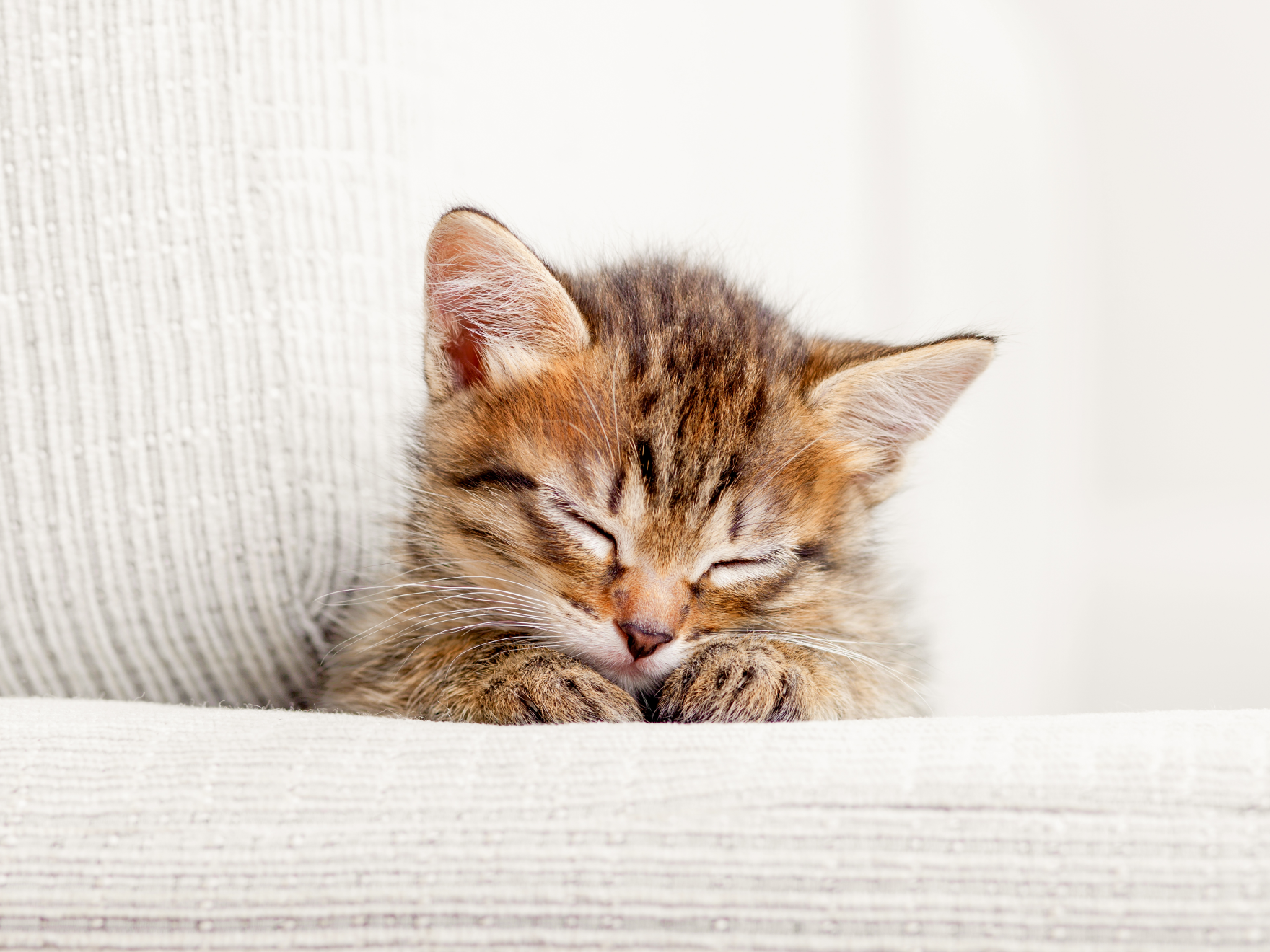
New kitten Checklist – Prepare the essentials for your kitten’s arrival
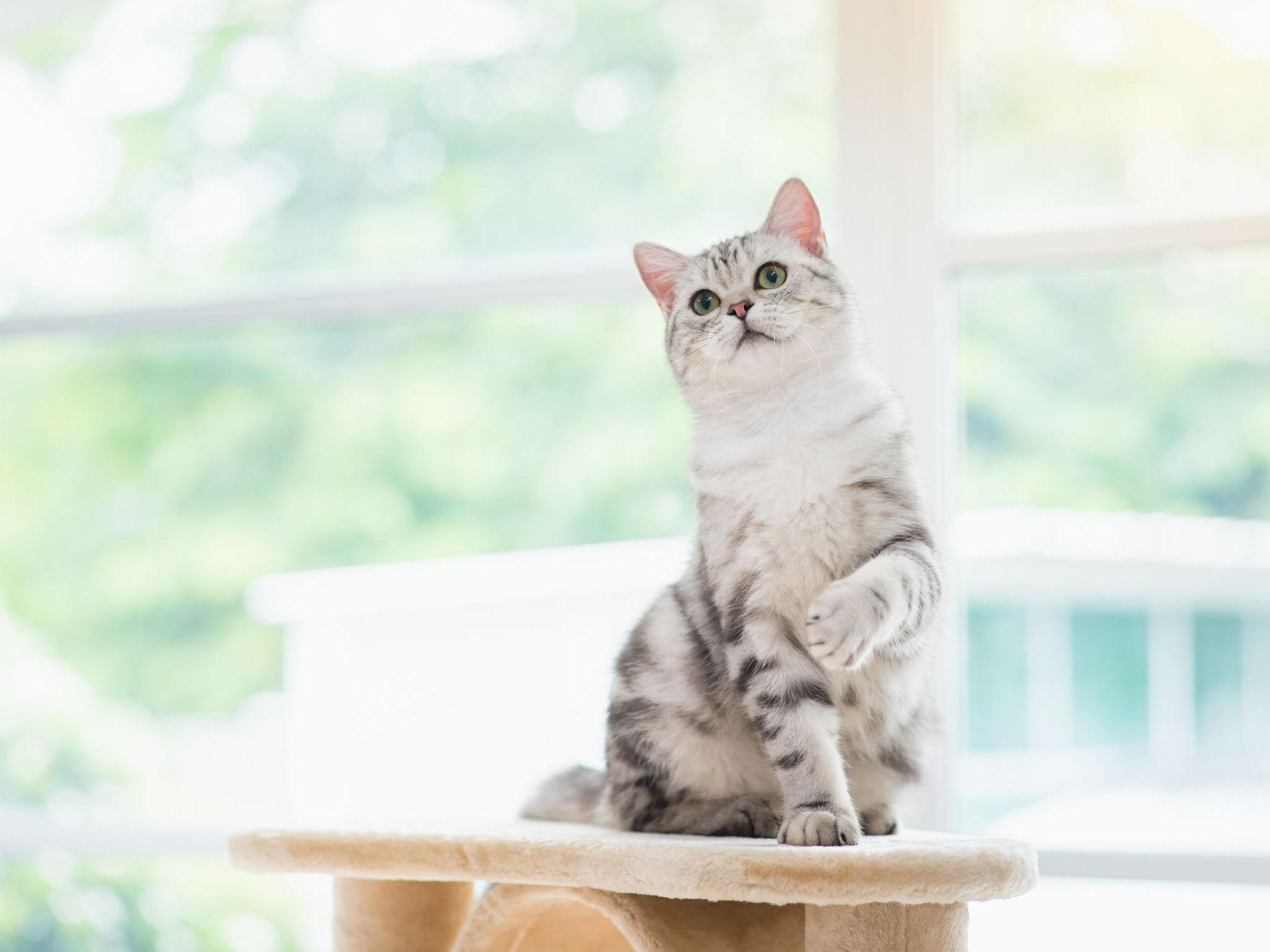
Our guide to indoor and house cats
Like & share this page